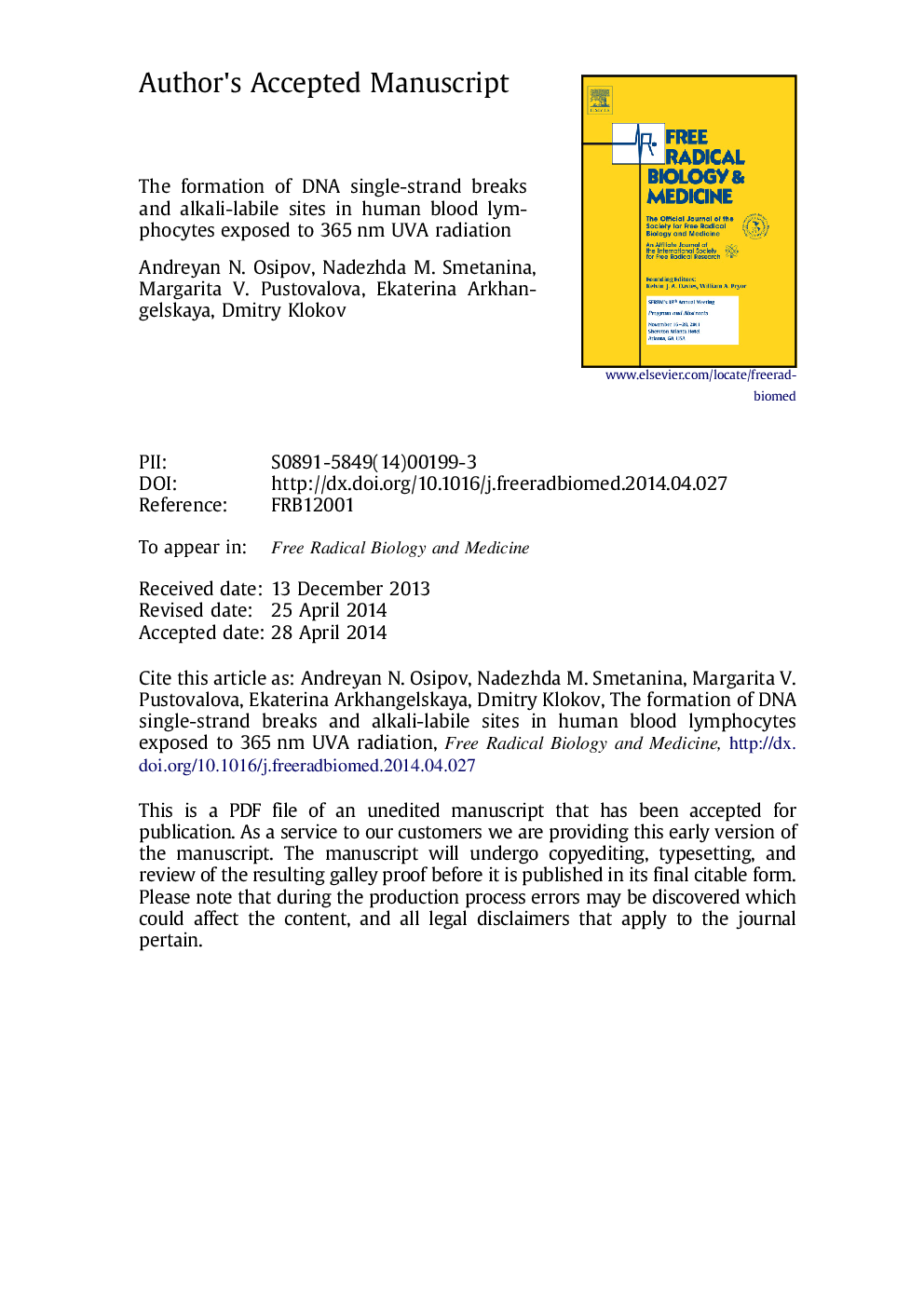| Article ID | Journal | Published Year | Pages | File Type |
|---|---|---|---|---|
| 8270054 | Free Radical Biology and Medicine | 2014 | 32 Pages |
Abstract
The potency of UVA radiation, representing 90% of solar UV light reaching the earth׳s surface, to induce human skin cancer is the subject of continuing controversy. This study was undertaken to investigate the role of reactive oxygen species in DNA damage produced by the exposure of human cells to UVA radiation. This knowledge is important for better understanding of UV-induced carcinogenesis. We measured DNA single-strand breaks and alkali-labile sites in human lymphocytes exposed ex vivo to various doses of 365-nm UV photons compared to X-rays and hydrogen peroxide using the comet assay. We demonstrated that the UVA-induced DNA damage increased in a linear dose-dependent manner. The rate of DNA single-strand breaks and alkali-labile sites after exposure to 1 J/cm2 was similar to the rate induced by exposure to 1 Gy of X-rays or 25 μM hydrogen peroxide. The presence of either the hydroxyl radical scavenger dimethyl sulfoxide or the singlet oxygen quencher sodium azide resulted in a significant reduction in the UVA-induced DNA damage, suggesting a role for these reactive oxygen species in mediating UVA-induced DNA single-strand breaks and alkali-labile sites. We also showed that chromatin relaxation due to hypertonic conditions resulted in increased damage in both untreated and UVA-treated cells. The effect was the most significant in the presence of 0.5 M Na+, implying a role for histone H1. Our data suggest that the majority of DNA single-strand breaks and alkali-labile sites after exposure of human lymphocytes to UVA are produced by reactive oxygen species (the hydroxyl radical and singlet oxygen) and that the state of chromatin may substantially contribute to the outcome of such exposures.
Keywords
Related Topics
Life Sciences
Biochemistry, Genetics and Molecular Biology
Ageing
Authors
Andreyan N. Osipov, Nadezhda M. Smetanina, Margarita V. Pustovalova, Ekaterina Arkhangelskaya, Dmitry Klokov,
